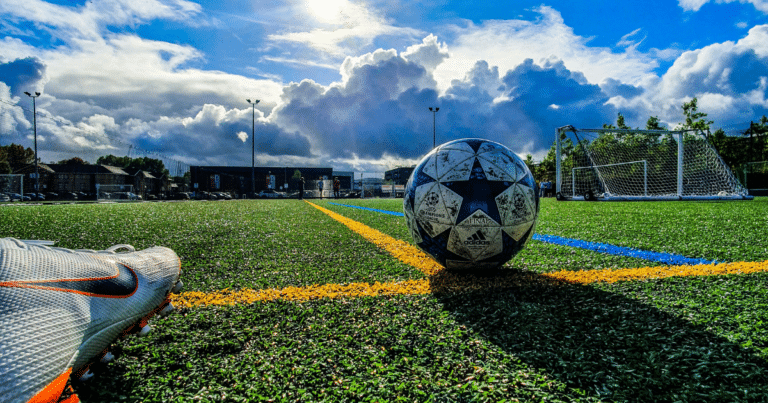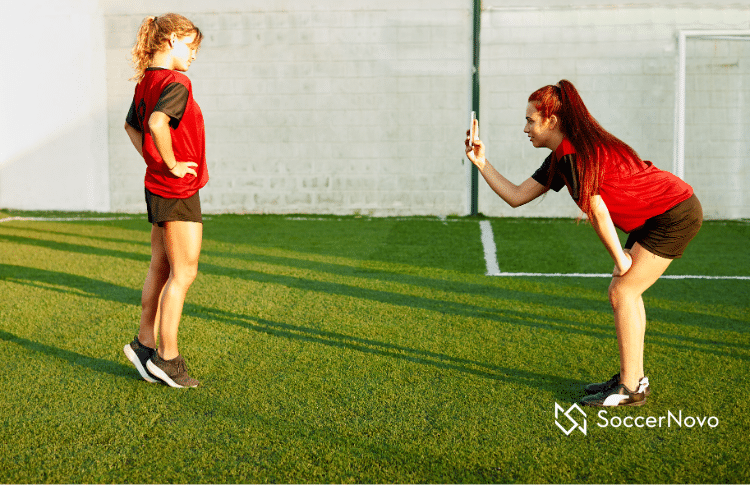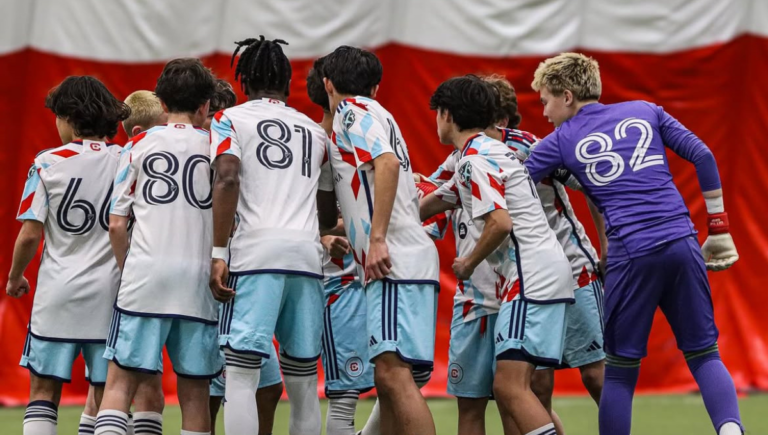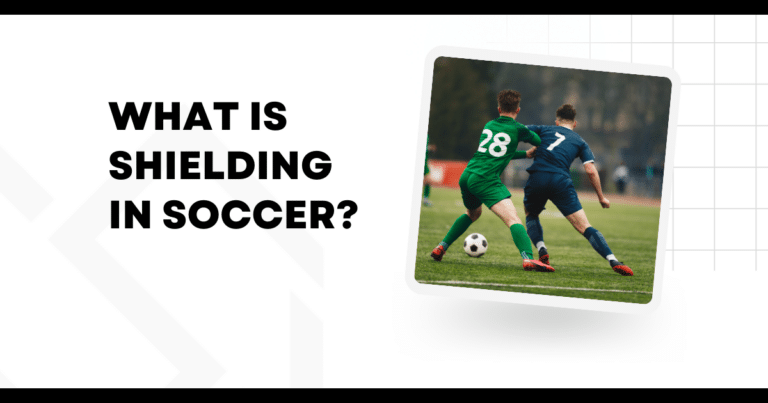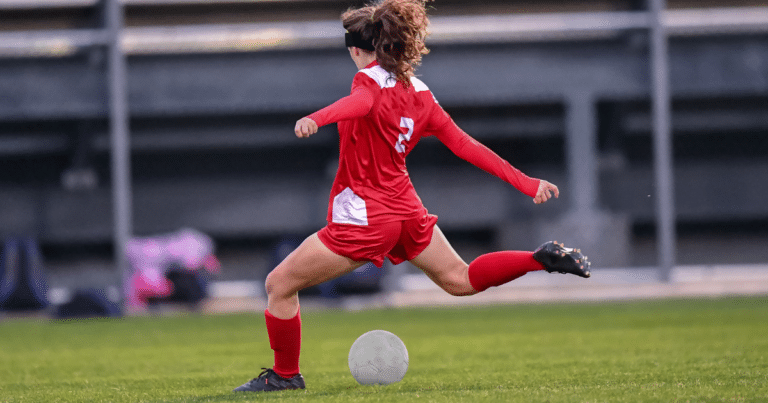Youth Soccer Positions (The Basics)
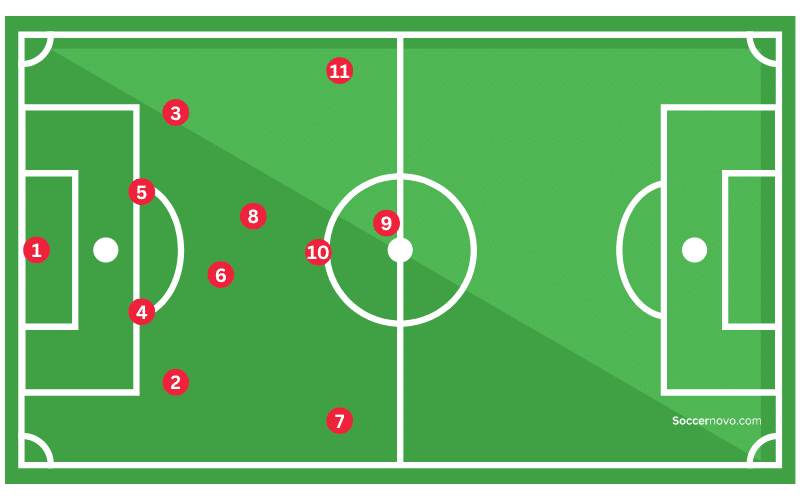
Understanding and learning the youth soccer positions is essential for coaches, parents and players. With each position there is a certain role, pace and formation a player must play with to better the team.
Our team will breakdown each position and some of the skills needed for a player to find success.
Soccer Position By Number
In the game of soccer, you’ll often hear specific positions mentioned by number. These numbers help to simplify each position and have been in reference for decades.
Here is a list of positions with their numbers and abbreviations:
1 – Goalkeeper (GK)
2 – Right Fullback (RB)
3 – Left Fullback (LB)
4 – Center Back (CB)
5 – Center Back (CB)
6 – Central Defending Midfielder (CDM)
7 – Right Winger (RW)
8 – Central Midfielder (CM)
9 – Striker (S)
10 – Central Attacking Midfielder (CAM)
11 – Left Winger (LW)
Goalkeeper
A goalkeeper is the last line of defense on a soccer team. The primary task of a goalkeeper is to guard the goal and ensure the opposition does not score. A goalkeeper makes substantial efforts to stop the opponents from scoring.
At the same time, if you are a goalkeeper in a youth soccer game, you may also instruct your team, particularly defenders, to be in certain positions since the Goalkeeper sees the entire field.
Right and Left Fullbacks (Defender)
Right, and left fullbacks are important defenders on the soccer team. The primary role of these players is to protect their side as well as aid the center backs. A good fullback will start the counter-attack out of the backfield.
Center Backs (Defender)
Center backs are responsible for safeguarding the goalkeeper and making substantial efforts to prevent the opposing team from reaching the goal box. A center back must hold their ground and make tackles when the opposition is on the attack. More times than not, center backs are one of the most physically dominant players on the team.
Central Defensive Midfielder (Midfielder)
A central defensive midfielder, also known as a holding midfielder, acts as a bridge between the defenders and midfielders and ensures the opposing team has fewer attacks. Once their team gains position of the ball, it is their responsibility to move the ball upfield as quickly as they can.
Center Midfielder (Midfielder)
A center midfielder links defenders and attackers. It is one of the most strategic positions on the field, allowing the player to constantly receive and pass the ball. A quality central midfielder will distribute the ball from the backfield to the attackers. They will be able to create passing angles through the middle.
Right and Left Wingers (Midfielder/Forward)
The right and left midfielders support the defenders and the center midfielder. These players lead the attack up the sidelines and increase the chances of scoring. Likewise, these midfielders also support right and left fullbacks. Wingers know how to play the line and will often work alongside many other players to be a support outlet to ignite the offense.
Attacking Midfielder (Midfielder/Forward)
An attacking midfielder is the backbone of a soccer team. Often referred to as the best playmaker on the team, the attacking midfielder needs to have great ball control and vision. They are able to not only facilitate but score.
Striker (Forward)
A striker is the player closest positioned to the opposing goal and their primary responsibility is to score. Typically, a striker has good north-to-south speed and has a knack for being at the right place at the right time. A great striker can wreak havoc on a defense and can be the difference in many games, especially at the youth level.
Advice to Young Soccer Players
The best thing you can do at an early age is not to bucket yourself into one position. As players get older, naturally they’ll find themselves working one or two positions on the pitch. But, just because you are a defender doesn’t mean you shouldn’t be working on your shooting. We’ve seen it happen again and again…a player may develop later in life and find themselves transitioning from striker to center back – and vice versa.
Try to become a well-rounded player with various skills. Welcome new positions if the coach sees you might fit them well. This will help players see different angles and scenarios as they progress in their playing career.

Written By: SoccerNovo
SoccerNovo is an independent youth soccer media brand built to help parents, players, and coaches better understand the game and the pathways available in U.S. soccer. Our mission is to make youth soccer simpler, clearer, and more accessible for everyone involved in it.
Let’s connect


